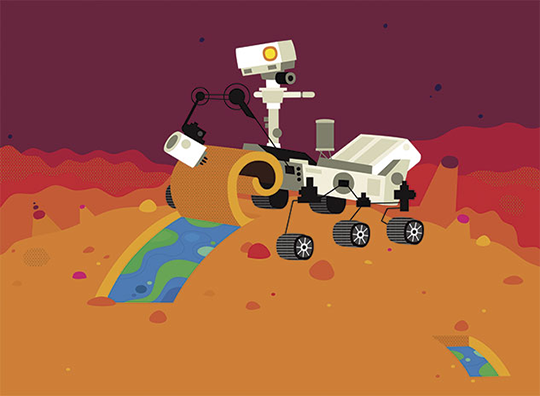
We Don't Know... What Mars May Reveal About Earth's Beginnings
Planetary geologist Kirsten Siebach is part of the team operating the Perseverance rover on Mars.
By David Levin
There are tons of nagging questions I’m hoping we can answer with our work: What was its climate like when Mars had water on its surface? Why was that water there? What was the atmosphere made of, and how thick was it? Basically, I think all of my research boils down to trying to recreate what it was like to stand on the surface of Mars 3 1/2 billion years ago — because those answers translate very closely to the question of what Earth was like in its early days, when life was just emerging.

It may seem counterintuitive, but by analyzing rocks on Mars, we can actually learn more about the early Earth than we can by studying rocks here on our own planet. That’s because we have plate tectonics, which constantly recycles the Earth’s crust. As plates collide, they slide underneath each other, and old rock at the surface moves down into the mantle where it melts. In the process, it erases any history of the planet’s beginnings.
Plate tectonics has enabled life to thrive on Earth for an extended period of time. It’s critical to keeping the atmosphere at a certain density and keeping the carbon dioxide content in the atmosphere at a certain level, which let complex life evolve. Today, our planet has become dominated by life and is completely altered by it. Life puts oxygen in our atmosphere. It has changed the way rivers flow. It’s actually really hard to imagine the time before life emerged on Earth, since everything we see is affected by life in some way. Mars, on the other hand, gives us that chance to ask what our planet looked like before life began and could tell us what Earth might look like today if life never took hold.
It’s a pretty fascinating idea — having to go to another planet to reflect back to the origins of life on our own — but I love puzzles, and Mars is one of the biggest puzzles there is. Luckily, the rovers and orbiters we’re using give us a pretty good set of tools to try and solve it, which is why I’m so excited that NASA chose me to be a part of the Perseverance mission.
— As told to David Levin
Kirsten Siebach is an assistant professor in the Department of Earth, Environmental and Planetary Sciences.
